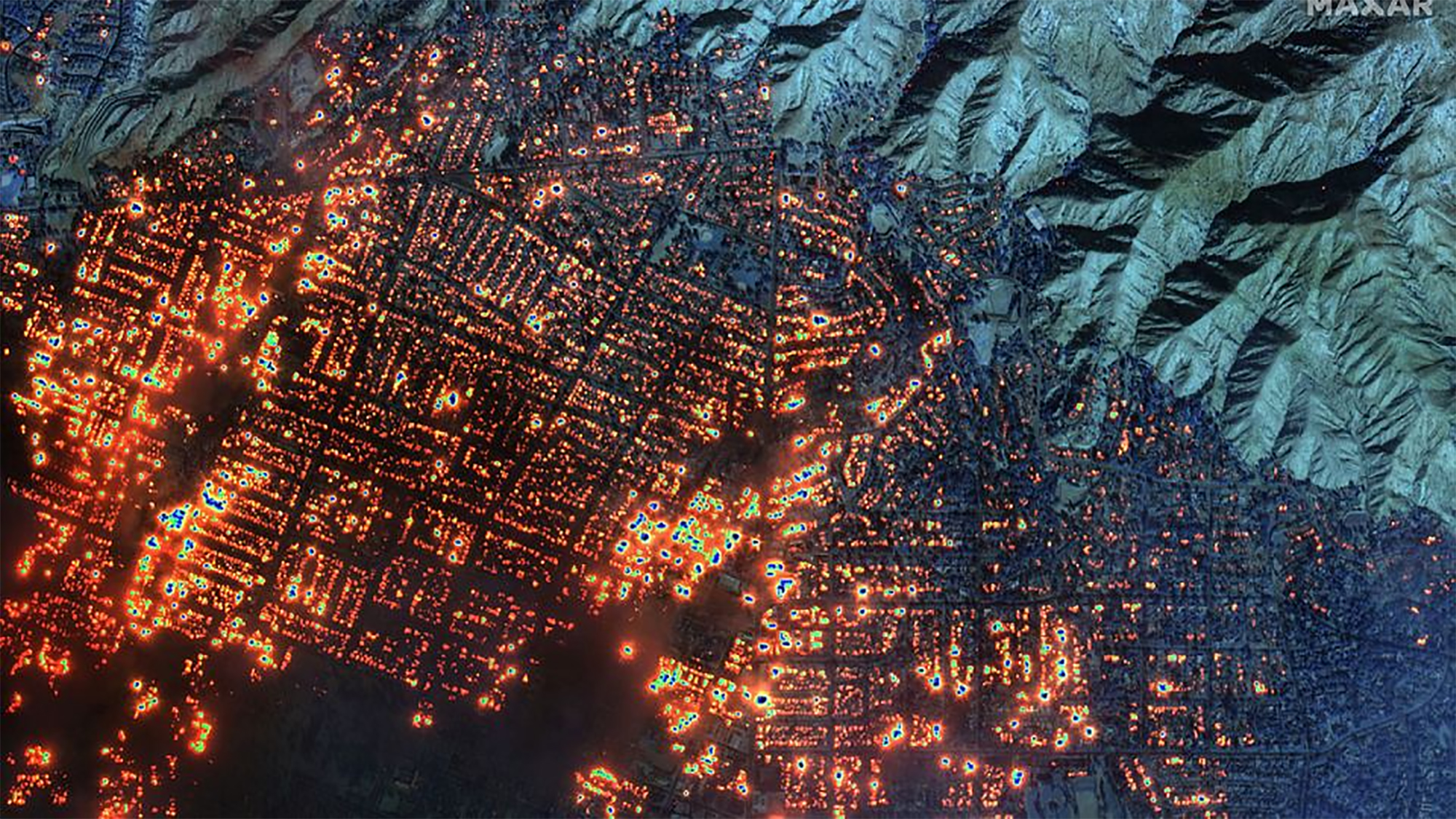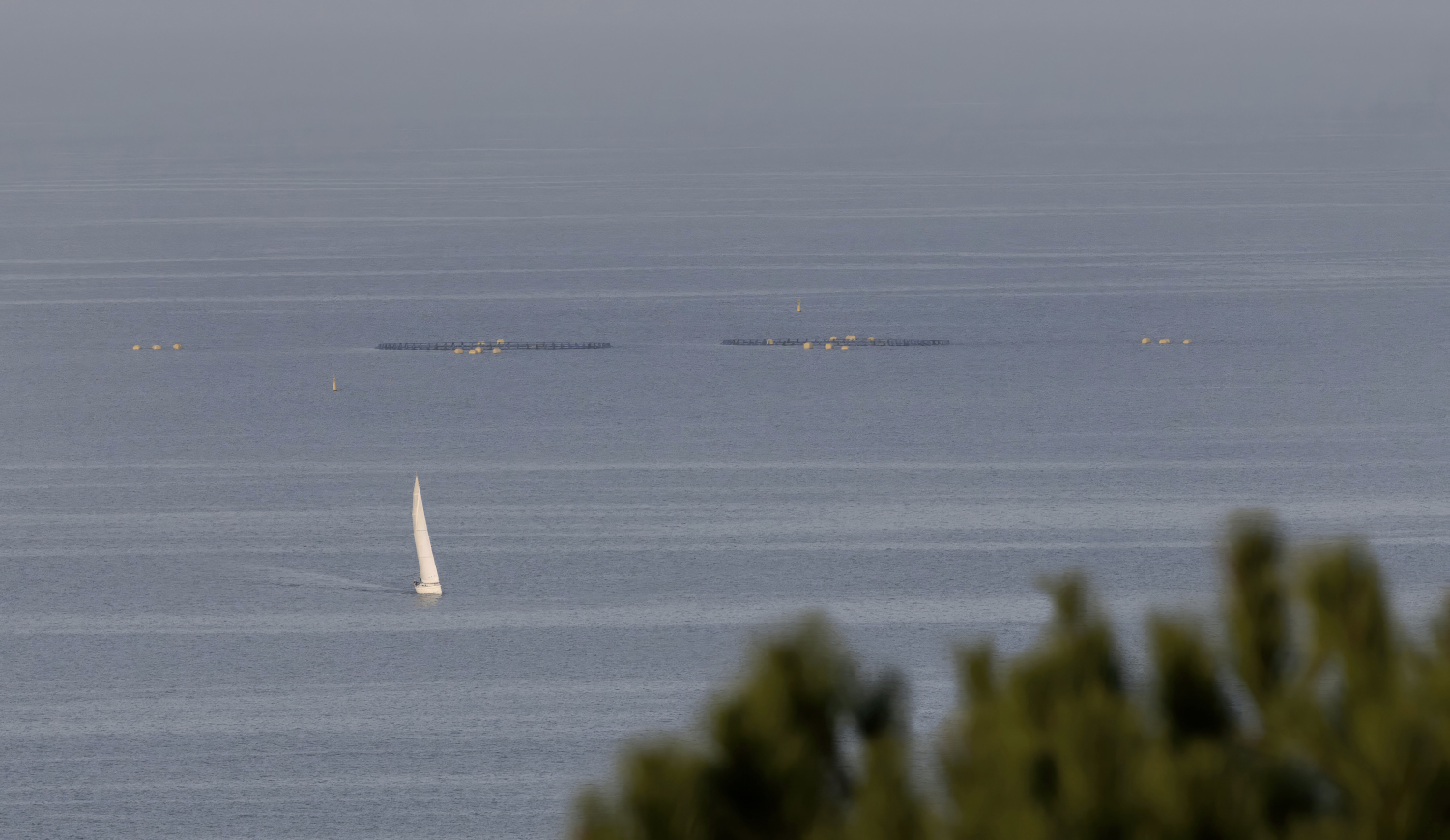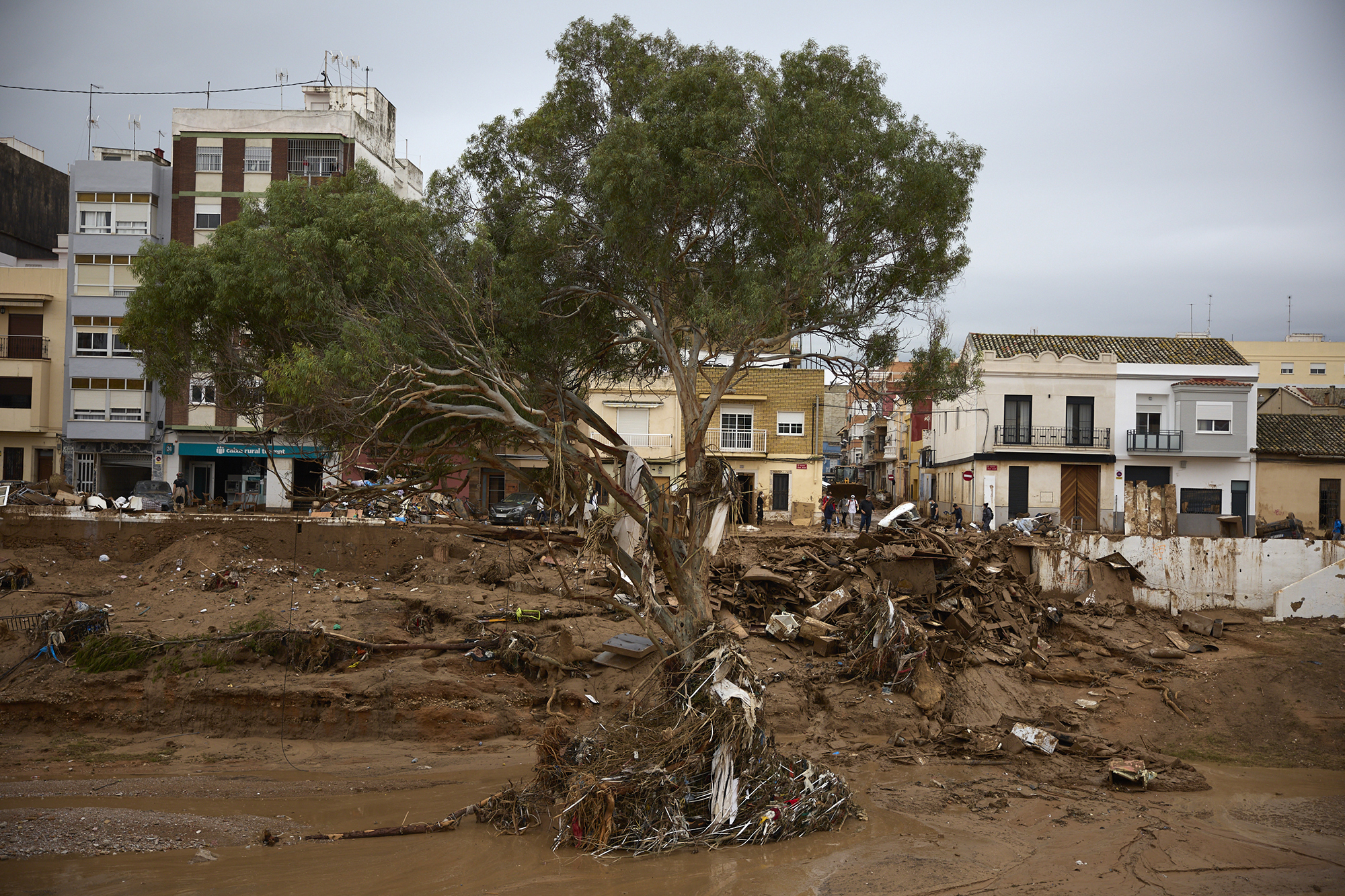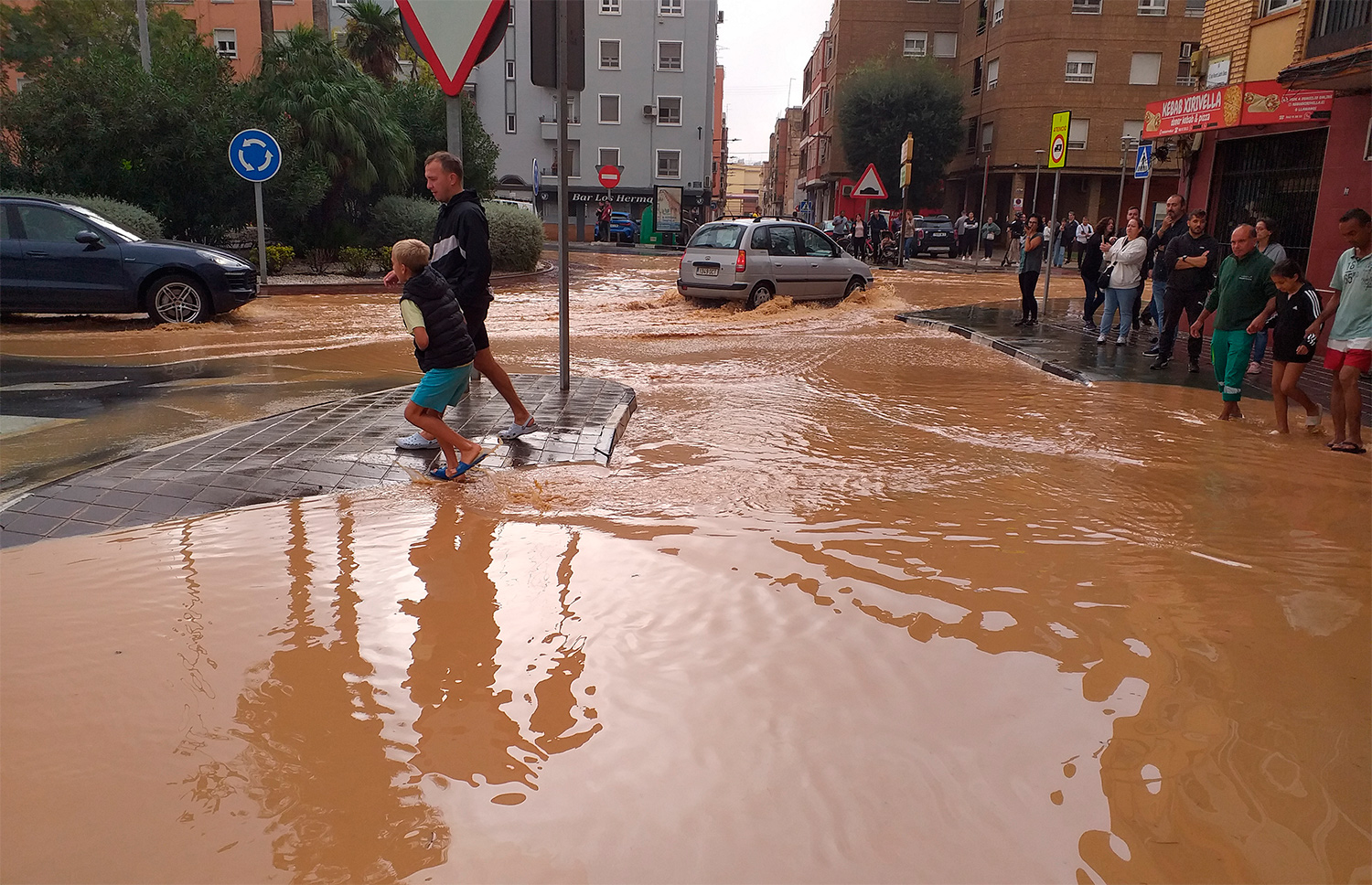Building new socio-political consensus to balance the territory
- In the last 50 years, the population imbalance between metropolitan and rural areas has increased considerably, also in the Basque Country. The main demographic indicators in some regions are negative. Rural and mountain areas are being depopulated: both Zuberoa - Baja Navarra and the Ribera del Alto Navarra, as well as several Alavesas counties. Why keep the balance? What to do? How do we distribute the tasks of this popular challenge? Gaindegia (Observatory for the Economic and Social Development of the Basque Country) has updated the demographic indexes of the municipalities. We have sought an explanation of the situation with Imanol Esnaola. We have also gathered the views of Unai Fernández de Betoño and Isabel Elizalde.
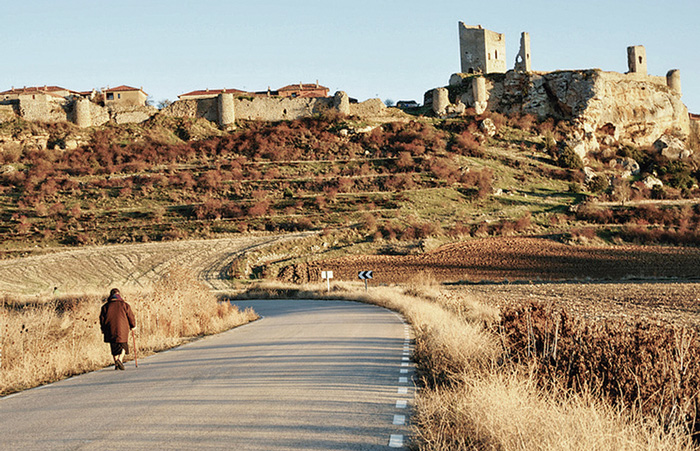
Socioeconomic geography of the current Basque Country, II. It is the result of the economy that was established after the World War. In this economic model, cities were established as industrial and service areas, differentiating in the territory the areas linked to the industrial structure and those not linked. In any case, by then the industry already had a wide spread in the territory, valley by valley, especially in Bizkaia and Gipuzkoa.
In the twenty-first century, economic growth prior to the 2008 crisis was very strong. Mobility patterns changed: private vehicle-based mobility gained great strength and, with strong construction activity, a large rural area absorbed the population of the metropolis. These rural villages acquired the character of a dream city. This is observed, for example, in the case of the population displaced from metropolitan Bilbao to Plentzia – Mungia.
There was a kind of rupture of the old model of industrial economy with a high degree of metropolization. Since then, the industrial area is less and more concentrated in the urban centers, to the point that the change of residence occurs urgently in the professional career of many. Until then, the Basque territory had the means to maintain the balance. Since 2008, the evacuation of peripheral areas that were left out of urban phenomenology has been accelerated. The difficulties of staying in non-metropolitan areas accelerated, among other things, by the loss of economic activity or the reduction of public services. An example of this are Zuberoa, Sangüesa, Baztanaldea, Tafalla, Montaña Alavesa or Lea-Artibai, among others.
For a municipality to remain, it must offer citizens three pillars: services, material means – employment
and income –
and opportunities for socialization.
Along with the scarce economic possibilities in rural areas, the most developed economic activities or most of the jobs in services are found in metropolitan areas. This has particularly affected young people seeking to live in their own country. In other words, those who have not found livelihoods in small towns have come to more urban areas, and those who have stayed in small towns have been the ones who have their material living conditions guaranteed or have a job centre nearby. Therefore, cities are becoming the main meeting point of all the countries of the West, and also of ours. They welcome both the citizens who are born there and those who come from abroad, turning them into increasingly plural areas. And, by the way, rural areas are being lost, envejeciendo.Entre
2008 and 2017, 375,000 people have come to live in Hego Euskal Herria from Spain and France, and also from meat. Many have been located in metropolitan areas, but the main levels of concentration of immigration occurring outside France or Spain are as follows: Ribera de Arago-Arga, Tudela, Cuenca de Pamplona, Ribera del Ebro, Bidasoa and Tafalla. Areas where there are sectors that offer unfavourable working conditions.
The future of municipalities
For a municipality to remain, it must offer citizens three pillars: services, material means – employment and income – and opportunities for socialization. In the 21st century, that's what people ask when it comes to choosing to live in cities or towns, that is, to live as standard models. However, the inhabitants of small towns have fewer and fewer resources to live as cities, or if they prefer, the imbalance between the possibilities is increasing. Although the Basque Country is small, in the Pyrenees of Navarre, in Álava and in the Ribera the distances are large, so the difficulties are also so. Or, for example, those who want to study in Basque in Ipar Euskal Herria or have to go to the Baiona Hospital, have to travel to the nearby areas.
In Bizkaia and Gipuzkoa the situation is different, the territory is more balanced in terms of population, services and economic activity. However, small municipalities continue to compete with urban centers. The region of Lea-Artibai is losing population, although it is an Euskaldun area of strong identity, despite having significant economic entrepreneurship and efficient infrastructures of economic promotion. However, since it is a territory that is marginalised from the point of view of spatial planning, and due to the lack of transport infrastructures, it has not achieved full efficiency in the retention of the population in competition with the Duranguesado or the Greater Bilbao.
The territorial planning of the Basque Country is administratively atomized and there is no consensual territorial cohesion policy. That's why Esnaola says: “XXI. We are in the twenty-first century and those of us who recognise the problem must be aware of the regeneration of the territory and, above all, of the rural areas. Our great material and immaterial heritage is present, the option based on local sustainability needs a rural space, that is, large natural spaces, wood and water, land of food maturation, communities living in Basque…”.
Is there a solution?
However, Basque rural municipalities are not organised in a network, they do not speak with one voice to society and Basque institutions. For example, the response of the Basque municipalities to the consideration of Euskera in spatial planning explains the extent to which it is a contempt.
In the 2000s, the Basque areas suffered the phenomenon of the lo-cities. Those who left the capitals discovered fragile Basque communities. However, no concrete strategies have been adopted to facilitate the adaptation of participants to the new linguistic situation, and the Administration still does not take into account linguistic criteria in spatial planning. This, of course, has had negative consequences on the rules for the use of the language of these communities.
Given the importance of the matter, it has become an urgent problem: how to work together between the city and the countryside in the Basque Country?
The members of Gaindegia say that some features derived from the development of the history of the territories must be taken into account:
– First, the post-war population growth in Bizkaia and Gipuzkoa was driven by the scattered industry in the territory. Today, however, it is not possible to replace this population as a whole, either in volume or in geographical form.
– As in many other country challenges, there is no consensual country strategy for small municipalities to remain. There are processes that have not been expressly agreed and organized, nor are they sustainable over time.
– We started to worry when Euskaldunes started to harm the municipalities of Euskaldunes. However, for example, we do not take into account the losses of the dwellings. Since the end of the twentieth century, European agricultural policy has depressed the necessary functionality of the farmhouse in our society. If there were more baserritars in food production, today we would have a much more stable basis, not only in food, but also in the sustainability of rural municipalities. This option should be worked with intensity.
– Since 2000 the mobility and displacement patterns of the population have changed a great deal, but this has not affected the rural area far from the metropolis (Roncal-Salazar, Baztanaldea, Cinco Villas or the counties of the Ebro River round).
– The problem is not only the existence of weak processes in the organization of municipalities, but the lack of a country pact that determines the complementarity between the rural and the urban environment. In Nafarroa Garaia and in Ipar Euskal Herria, it is evident the place where the dwellings have been built and the demographic movement that this has led to. The indices of the Pyrenean municipalities are worrying, as are those of some municipalities in the Bank.
We have started to worry when the Basque municipalities have started to hurt us. But, for example, we don't take into account the losses of farmhouses.
In this sense, the reflection on national development is weak and shows the lack of social debate on territorial balance or weak public policies. The case requires two responsible responses in the organized society and in the institutional decision-making spaces. In our case, UEMA has tackled the issue with determination in the linguistic field. In Ipar Euskal Herria, the agenda has been more comprehensive along the way of the OECD. In Álava, the issue has been the movement for the councils: "Territorial balance is not politically equal, but it is a question of a great political dimension. In the twenty-first century there will be no sustainable country project, if we do not rely on territorial balance, the Eusko Ikaskuntza Congress has also emphasized this,” says Esnaola.
The issue is not on the agenda
The economic efficiency of metropolitan areas has been increasing. Consequently, three-quarters of the territory do not meet the high economic expectations of the urban center. As for territorial balance, there is a lack of awareness of this asymmetric relationship, as well as of the methods to achieve territorial balance.
In the opinion of Imanol Esnaola, “the revitalization of rural areas is one of the pillars of the national strategy. You cannot be a people unless you give your geophysical reality a firm blueprint. This people must be recognized by all parts of the body, if we are a nation.”
What is missing? Making social and political forces more effective when it comes to resources. It does not exist at present. Perhaps, thanks to years of work and awareness, in twenty years' time, the conservation and revitalization of rural areas is the demand for a social and political majority.
Euskal Herriko udalerrien erdiak biztanleria galera nozitu du azken hamarkadan. Haatik, herritar kopurua gorantza doa. Euskal Herriak 3.152.200 biztanle ditu. Azken urtean, berriz ere, hazkunde demografikoa positiboa izan da biztanleria etorkinari esker. Bizkaian, esaterako, etorkin berriak direla tarteko, herrialdeak biztanleria galtzeari utzi dio azken biurtekoan. Zuberoa da, aspaldiko joeraren ildoan, 2018. urtean herritarrak galdu dituen herrialde bakarra. Hala ere, Zuberoaren despopulazioa ez da arreta merezi duen fenomeno bakarra.
DEGURBA (Hirigintza maila) sailkapenaren arabera, hiru lurralde tipologiek –hiriguneak, landa-eremuak eta bitarteko hiriguneak– biztanleria irabazi dute azken urtean eta hamarkadan. Euskal Herriak hazkunde demografikoari eusten dio, baina biztanleen %17,4 baino ez da bizi landa eremuan. Joera orokor horren atzean hainbat ñabardura daude: 200 biztanle baino gutxiago duten 150 udalerri daude, horietatik, 55k 100 biztanle baino gutxiago dute. Demografikoki geografia bereziki sentikorra dira Lizarrako merindadea, Zuberoa, Erronkari-Zaraitzu, Auñamendi edo Garazi-Baigorri bezalako eremuak.
Espainiako Estatuko despopulazioak enplegua eta zerbitzuak barnebiltzen dituzten tamaina ertaineko hirien osasunaren garrantziaz ohartarazten digu. Euskal Herriko errealitatera ekarrita, funtzionalki eskualdeburuak dira lurralde orekari eusten diotenak.
Azken urteko joera
Bizkaiko eta Zuberoako landa eremuek biztanleria galdu dute. Zuberoako galera larria eta aspaldikoa da. Lehen mundu gerraz geroztik datorren joera pean dago, mende oso bateko biztanleria galera nozitzen ari da. Bitartean, Bizkaiko hiriguneak 2011z geroztik nozitzen zuen biztanleria galera eten egin da, baina krisi hasieran baino 13.700 biztanle gutxiago ditu.
Irunberrialdea, Auñamendi, Erronkari-Zaraitzu, Arabako Mendialdea edo Zangozerria eskualdeetan biztanleria galera esanguratsua eman da. Eskualde horien artean, gehienek biztanleria galera garrantzitsua nozitu dute azken hamarkadan. Hortaz, kasu gehienetan errotutako despopulazio joera bati erantzuten dio.
Euskal Herria osatzen duten 686 udalerrietatik 339 udalerrik biztanleria galdu dute. Horietatik 291 landa-eremuan daude. Biztanleria gehien galdu duen udalerri kopurua Nafarroa Garaian dago. Halaber, galdera izan da Lizarrako merindadearen ekialdean. Gernika-Bermeo, Araba Errioxa, Garazi-Baigorri edo Goierrin ere, modu batean ala bestean, herritarrak galdu dituzten udalerrien kopurua aintzat hartzeko modukoa da.
Azken hamarkadako joera
Zuberoako landa eremua izan da biztanleria gehien galdu duen eremua: hogeita zortzi udalerrik biztanleria galdu dute, eta soilik hamabostek irabazi edo doi-doi eutsi. Gainera, eremu horren gainzahartzea handia da: %15,8. Bitartean, Lapurdi zein Baxenabarreko landa eremuen hazkunde demografikoa garrantzitsua izan da: %17,8 eta %6,5, hurrenez hurren, batez ere Lapurdin. Hots, hirigintzaren susperraldia dela eta, “lotarako herrien” paradigma eta mugikortasuna gero eta indar handiagoa dira barnealdean. Horrek ez dio Zuberoari eragiten, haatik.
Nafarroa Garaiko landa eremuak ere biztanleria galdu du: %0,8. Hiriguneak ez bezala: %5,4. Egoera bereziki larria da Erronkari-Zaraitzun. Herritarren %14 galdu da eta gainzahartze maila oso handia da: %20. Erronkari-Zaraitzu eskualdeko hemezortzi herrietatik hamabik biztanleriaren %10etik gora galdu dute. Eskualdean ez dago biztanleria galerarik izan ez duen udalerririk.
Nafarroa Garaian, Zangozerrian, Baztanaldean, Tafallaldean, Ebro Garaiko Erriberan edota Arga-Aragoiko Erriberan ere biztanleria galera aintzat hartzekoa da. Izatez dentsitate apaleko eremuak dira eta gainzahartze maila Euskal Herriko batez bestekoaren gainetik dute. Edonola ere, ez dira biztanleria galdu duten Nafarroako eskualde bakarrak. Bitarte horretan Iruñerriko biztanleria %6,8 hazi da. Lurralde desoreka nabarmenen aspaldiko joerak dira hauek, eta itxura batean, azken urteotan desoreka hauek lausotzen hasiak dira. Alabaina, joerak oraindik oso errotuta daude herrialdearen errealitatean.
Hego Euskal Herrian bertan ere badira biztanleriari eusteko egiturazko arazoak dituzten beste zenbait eremu. Nabarmentzekoak dira Arabako Mendialdea, Trebiñu edota Lea Artibai.
Euskal Herriko despopulazioaren arazoa oraindik ez da ailegatu Europako beste herrialde batzuetako neurri larrietara (Bulgaria, Errumania, Espainia, Portugal) baina dagoeneko zantzu kezkagarriak dauzkagu mahaigainean, azken hamarkadan biztanleriaren hazkunde-tasa negatiboa duten euskal eskualdeek eremu zabal, jarraitu eta argia osatzen dutelako jada. Gutxienez Arabako Trebiñu eta Mendialdea, Nafarroa Garaiko Lizarraldea, Tafallaldea, Zangotzerria eta Erronkari-Zaraitzu, eta Zuberoa osoa daude dinamika demografiko arriskutsua pairatzen duen eremu geografikoan. Hiri handirik ez duen barneko lurraldean, alegia. Despopulazioaren fenomenoa hirien eta kostaldearen nagusigo garaikidearen ifrentzua baita. Hainbeste, non bi abiadurako Euskal Herria sortzen ari garen. Nahi gabe... edo nahita.
Barnealdeko landa-eremuaren huste demografikoaren atzean hainbat faktore dago (nekazaritzaren gainbehera, zerbitzuen eskasia, orografia...), baina arrazoi gehienak indar-harreman desorekatu baten ondorio dira: erabakigune nagusiak hirietan izaki, hirietatik eta hirietarako hartzen dira erabaki gehienak. Gure gobernantza, onerako zein txarrerako, ez delako lur kopuruan oinarritzen. Ondorioz, Euskal Herrian (ere) lurralde-antolamendu urbanozentrista baten zurrunbiloan gaude, non inbertsio distiratsuak hirietara erakartzen diren, eta azpiegitura deserosoak (zabortegiak, errauskailuak, kartzelak, poligono logistikoak, herrietan gelditzen ez diren trenak...) landa-eremura kanporatzen. Kulturalki ere baztertzen ari garen mendialdea soilik asteburuko aisialdirako hartzen dugu kontuan proportzioan gero eta gehiago garen kalekumeok.
Bi abiadurako Euskal Herrian lurralde-kohesio handiagoa sustatuko badugu, egoerari buelta eman behar diogu berandu baino lehen. Kontuan izanda putz eta zurrut ezin direla batera egin, eta, demografia orekatzeko, hiriburuen nagusigoa mugatu beharra dagoela, elektoralki erakargarria izan ez arren. Ideia horren antipodetan dago, esaterako, Araba, makrozefalia-indize ikaragarria duena, herrialde osoko biztanleen %76 Gasteizen bizi delako: hutsaren hurrengoa izango da landa-eremua suspertzeko Aldundiaren ekimena (proposatu diren onura fiskalak, adibidez), Gasteizen jada planifikatuta dauden 30.000 etxe berriei buelta ematen ez badiegu. Landa zein hiria, biak ala biak, ulertu behar ditugulako lurralde bakarraren parte gisa, arazo (eta soluzio) bakarraren osagai moduan.
Eta, jakina, landa-eremuan familiak errotzeko proiektuak jarri behar ditugu martxan. Tokiko baliabideak eta indarguneak garatuko dituzten proiektuak. Deszentralizatuak, eskualdean edo bailaran errotuak eta herri-partaidetzatik eraikiak. Baditugu ereduak: baso komunalen kudeaketa, eskola txikiak, lur-banku publikoak, energia sortzeko eta banatzeko proiektuak, euskararen arnasguneak indartzeko ekimenak, agroekologia lantzeko eta transformatzeko estrategiak, tokiko moneta, industria-klusterrak, tokiko ekoizleekin batera antolatutako salmenta-sareak, ondarea babesteko eta ezagutarazteko proiektuak, etekin sozialeko ekipamenduak...
Kanpoko inbertsoreak (enpresak zein turistak) erakartzeko saiakera puntualek etekinak eman ditzakete epe laburrean. Baina bi abiadurako Euskal Herriaren areagotzea modu iraunkorrean ekidin nahi badugu, aipatutako hiru estrategiak dira jarraitu beharrekoak: eskala ideologikoan, landa eta hiria batera ulertzea; Euskal Herri osoaren eskalan, lurralde-oreka erdiesteko neurriak hartzea; eta, eskualdeen eskalan, tokiko garapen endogenoa indartzeko proiektuak lantzea.
Udalerri txikiak hilzorian daudela diogunean (gogoan izan 150 udalerri badirela hazkunde negatiboa izaten ari direnak), ez gara zorizko gertaera bati buruz ari. Udalerri txikiak ahuldu zein indartu, eraikitzen dugun inguruak eragiten du. Euskal Herriak prozesu demografiko gogorrak bizi izan ditu azken 60 urteotan eta lehengo gaztetzeari oraingo zahartzea datorkio. Baina herri txikien arazoa ez da zahartzea, biztanleria gaztea galtzea baino.
Hazkunde ekonomikoko urteetan, lurraldean sakabanatutako industriak lagundu du nola edo hala, biztanleria errotzen, baina 2008 inguruko atzeraldi ekonomikoak industria ehun horren zati handi bat galarazi du, eta hor agertu zaigu arazoa. Zer egin behar dugu orain industria gutxiago duten komunitate horiek iraunarazteko?
Euskal Herriaren metropolizazioak beretzat hartu ditu jarduera ekonomiko eraginkorrenak, baita gazte prestatuenak ere. Atzeraldi ekonomikoak landaguneetako inbertsio publikoak ahuldu ditu. Euskal Herriak ez du jakin landa-guneari dagokion izaera aitortzen, metropoliaren mendeko eremu zehazgabetzat hartu dugu. Eta beraz, ez dugu landa-guneak bizirauteko iraunkortasun paradigma eraikitzen. Lurraldea desorekatzen ari bazaigu ez da herrien txikitasunagatik, komunitateontzat iraunkortasun paradigma eraiki ez dugulako baizik.
Udalerri mailako komunitateak iraunkorrak izateko zerbitzuak, bizitza soziala eta oinarri material egokiak behar dira. Hor dago erronka. Gai izango ote gara metropolien zilborrari begiratu ordez, lurraldeari bere integraltasunean begiratzeko? Gai izango ote gara politika publikoen bitartez gure lurraldetasuna aintzat hartzeko?
Landa-eremuko oraina eta geroa erakargarria, berritzailea, gaztea, femeninoa eta konprometitua izatea nahi badugu, landa-eremuetan bizitzea eta lan egitea aukera dela ulertu behar dugu eta ez lasta. Belaunaldiz belaunaldi, ikusi dugu gure hainbat bailarak, urtetik urtera, nahiz eta ahaleginak eta inbertsioak egin, biztanleria galtzen jarraitzen dutela, tantaz tanta, zenbaitetan itzulezineko egoerara iritsita. Gaur egun hiriek handitzen jarraitzen dute, eta herri anitzek husten.
Makina bat arrazoi dago eta, zenbait kasutan ahaleginak egin dira egoera itzultzen saiatzeko, baita biztanleria galerari aurrea hartzeko ere. Baina aspaldi antzeman dut bi afera errepikatzen direla behin eta berriro, gainditu beharko genituzkeenak: batetik, herrietako bizitzaren inguruan eraiki den kontaketa; eta bestetik, politikak aplikatzean izan den ikuspegi integral eskasa.
Duela oso gutxi, Nafarroako Pirinioetan izandako eztabaida publiko batean, nekez 30 urte izango zituen gazte batek hausnarketa egin zuen eskolan, baita etxean ere, esaten ziotenari buruz. Bere maisu izandakoari gogorarazi zion honek animatzen zuela hirira joatera etorkizun ona eduki nahi bazuen; jarrera hori konstante bat izan da gure herri askotan. Gazte horrek, halaber, bere buruari galdetzen zion ea itzuli zirenak eta herrian geratu zirenak prest ote zeuden bailaran sustrairik ez duten pertsonei harrera errazteko, baldin eta pertsona horiek lan egitera, ekintzailetza bultzatzera eta gure bailaretan bizitzera etorri nahi balute. Beti ez da erraza izan. Bertzaldetik, landa-eremura hiri-ereduaren bila datorrena oker dabil, eta ibarra bertan sortu direnena dela pentsatzen duena ere oker dabil.
Gaur egun gure bailarak eta herriak aukera guneak dira, eta are gehiago izan behar dute. Ingurune zainduetan, aberatsetan, baliabideak dituztenetan bizitzeko aukera; jasangarriagoa izanen den beste ekonomia-eredu batera igarotzeko aukera; ekonomia-jarduera berritzaileagoak, berdeagoak garatzeko aukera, ekonomia zirkularrari lotuta; munduarekin komunikatzeko aukera, tokian tokikoan eta globalean pentsatzeko; erkidegoa egiteko eta horrekin eta gure naturarekin konpromisoa hartzeko aukera; klima-aldaketaren aurka borrokatzeko, hobeto eta bertze modu batera bizitzeko, landa-eremuan bizi ahal izateko aukera.
Eta aukera hori errealitate bihurtzeko, herri-administraziook (tokikoak, herrialdekoak, estatukoak eta Europakoak) herrietako eta bailaretako dinamikak eta errealitateak ulertu behar ditugu. Kostatu bazaigu ere, politikoei eta proiektuei eman behar zaien ikuspegi holistikoz hitz egiten duten ahotsak entzuten hasi gara dagoeneko. Ikuspegi hori landa-eremuaren aldarrikapen nagusietako bat izan da. Betidanik nahi izan dute politikariek eta administrazioek arazoa bere osotasunean ikustea, ez ikuspegi sektorial batetik edo interes alderdikoi batetik.
Nazioartean badira jarraitu beharreko bidea erakusten diguten gidalerroak, Garapen Jasangarrirako Helburuak 2030, kasurako. Nafarroan, gainera, hainbat aurrerapauso eman ditugu: bertzeak bertze, Toki Administrazioaren erreforma; Tokiko Inbertsio Plana; Landa Garapeneko Programa; Hondakinen Legea edo Banda Zabaleko Plana. Halaber, esku artean ditugu Lursarea (Lurraldearen eta Jasangarritasunaren agentzia) eta landa garapeneko taldeak. Alabaina, gai anitz dugu lantzeko; bertzeak bertze, lurraldearen antolamendua eta kudeaketa XXI. mendeko errealitatera egokitzea, edo hurrengo Nekazaritza Politika Erkideak (NPE) familia-ustiapen profesionalaren eredua defendatzea lortzea.
Despopulatzeari aurre egiteak ausardia, burua eta bihotza eskatzen ditu. Anitz dugu kontatzeko, konta dezagun, erran eta egin dezagun, oilarrak kantatzen segi dezan, etxeek zabalik jarrai dezaten, soroek eta basoek ekoizten jarrai dezaten, errekek gure irriak entzuten jarrai dezaten, eta gu guztiok gure herrietan kalitateko oraina eta geroa izan dezagun.
Hirietako egunerokoa interesatzen zaio Sarah Babiker kazetariari; ez, ordea, postaletako irudia, baizik eta auzoetan, parkeetan, eskoletan, garatzen den bizitza; bertan dabilen jendea. Lurralde horretan kokatzen dira bere artikuluak, baita iaz argitaratu zituen bi lanak ere... [+]
A prestigious architect comes from London to a small Galician town. It is David Chipperfield, a building with offices in Berlin, Milan and Shanghai, and has a large team of buildings. An elegant, refined architecture, made by a Sir. The story begins in the village of Corrubedo... [+]
In recent weeks it has not been possible for those of us who work in architecture that the climate phenomenon of Valencia has not been translated into our work discourse. Because we need to think about and design the path of water in decks, sewers, plazas and building parks. We... [+]
To have a car (private) in Japan it is mandatory to have a parking (private). The measure seems controversial, as the regulation (the securities systems here) allows the occupation of spaces where the car deposit is public. That is, the problem is conceived as a responsibility... [+]
I have few friends with a European feeling, I do not know whether Europeity becomes an identity. But when we travel to Europe, a friendship may emerge, because the main areas of territoriality that are taking place in Europe and in Europe are shared, where it is decided to... [+]














